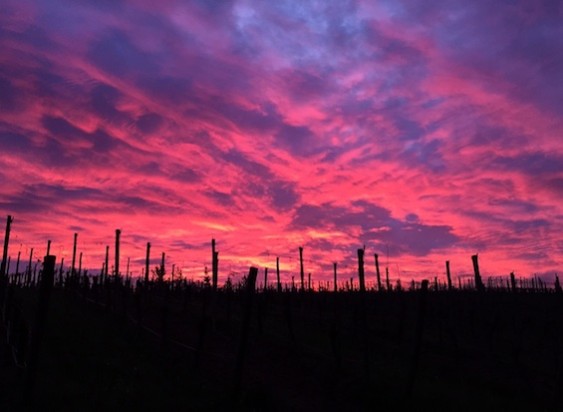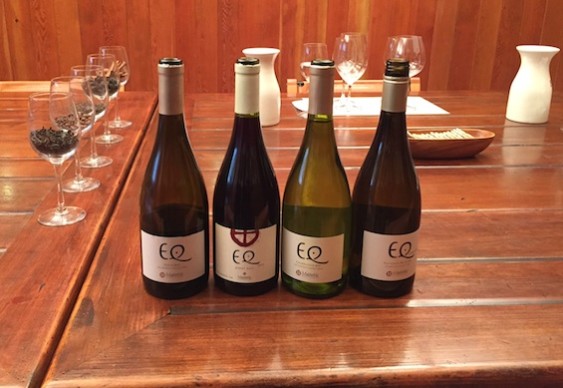Of all the wine regions, in all the countries, in all the world…one of the ones I was most excited about visiting recently was Chile’s Casablanca Valley (get ready for more shamelessly massacred quotes).
As Captain Renault might ask, what in heaven’s name brought me to Casablanca? Not my health, that’s for sure. Instead it was the wines.
You might know some of Chile’s other wine regions, including the Maipo, Colchagua and Rapel Valleys. But it was this small up-and-comer that I planned to explore. Not to mix movie metaphors, but if Chile’s wine regions were characters from Casablanca, the Colchagua might be Ilsa – brash, spirited, and international thanks to its famous full-bodied red wines. Casablanca (the region) would be more like Rick. A little more withdrawn, hovering below the radar, but with a masculine energy anchored by a steely core.

Casablanca is the Rick to Colchagua’s Ilsa. Photo credit: Getty Images and FilmakerIQ.
Located just about an hour’s drive east of Santiago, between the capital and the coastal city of Valparaiso, the Casablanca Valley is a relatively new wine region that was first planted in the mid-80s.
It soon earned a place on the winemaking map, though, thanks to the phenomenal cool-climate wines that came out of there. What do I mean by that? It’s considered a cool-climate region because it’s influenced a lot by the weather from the coast, and thus is more temperate than some of Chile’s other regions. The valley runs west to east, funneling in that cold ocean air and fog, which keeps the days more temperate and really turns the temperature down at night. That allows grapes to ripen more slowly and mature with lower sugar levels than in hotter regions, and it also helps create a lovely acid balance within the grapes and the wine produced from them.

The vines at Matetic at sunset on a recent night. No filter, I swear!
The region has become known not only for traditional cool-climate varieties like Sauvignon Blanc, Chardonnay and Pinot Noir, but also for Syrah and Cabernet Franc, which here produce delightful variations on those you’ll find from other parts of the country.
I was invited for a tasting and to spend the night at a winery called Matetic Vineyards in a sub-region of Casablanca called the Rosario Valley, a bit off the beaten path. There, they produce some fantastic biodynamic wines on a property that also fields herds of cattle and blueberry fields.
I talked to the winemaker, Julio Bastías about what it is that makes the Casablanca so special among Chile’s wine regions. And since he’s the expert, I’ll let him tell you in his own words.
I really enjoyed the wines that I tried, including the mid-level Corralillo line of Sauvignon Blanc, Chardonnay, Pinot Noir, Syrah and the winemaker’s blend of Bordeaux varieties.
However, it was even better to try them in the context of tasting the high-end EQ (for equilibrio, or “balanced”) line. Here’s what I thought of each, and a link to where you can buy them yourself, since they are available in the US.

My tasting at Matetic included its premium EQ line.
2015 EQ Coastal Sauvignon Blanc: To me, this wine embodies what’s best and brightest about Casablanca Sauvignons. It’s got lovely tropical flavors like mango and lime, as well as minerality, but with a slightly creamy finish that lends it a certain elegance.
2013 EQ Chardonnay: This wine is fermented in traditional Burgundian barrels with all native yeast. Its predominant flavors are clean and citrusy, but with just a touch of creaminess thanks to a little malolactic fermentation that Julio described as a thin layer of frosting on the cake. (The 2013 is still hard to come by, you might opt for the 2012 instead.)
2012 EQ Pinot Noir: Lovely intense red-fruit flavors like cherry and strawberry, but with some leafy, earthy notes and a soft palate derived from barrel aging on French oak.
2012 EQ Syrah: The star of the show here, and one of the first cool-climate Syrahs cultivated in Chile. This one was full-bodied and intense, as you might expect, with lovely notes of blackberry and plum as well as a hearty helping of pepper and spice, and a touch of chocolate on the long finish. (You will probably have an easier time finding the 2011.)
So next time you’re in the Chile section of your wine store, keep an eye out for Casablanca wines and try a few for yourself. It could just be the beginning of a beautiful friendship (sorry, I couldn’t resist).

